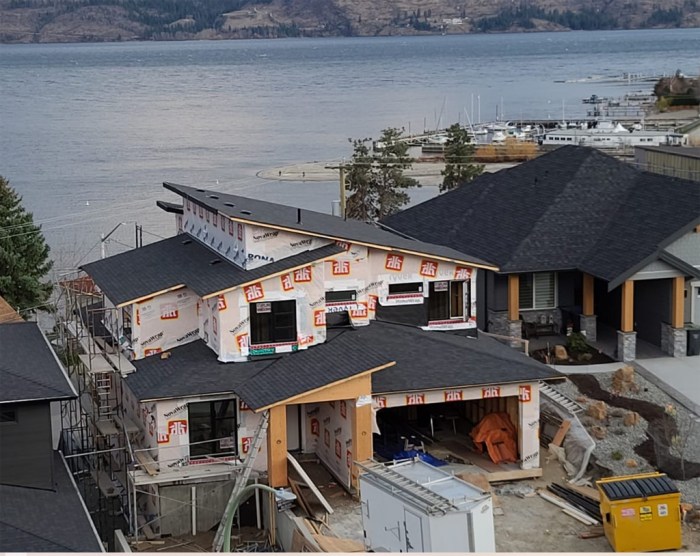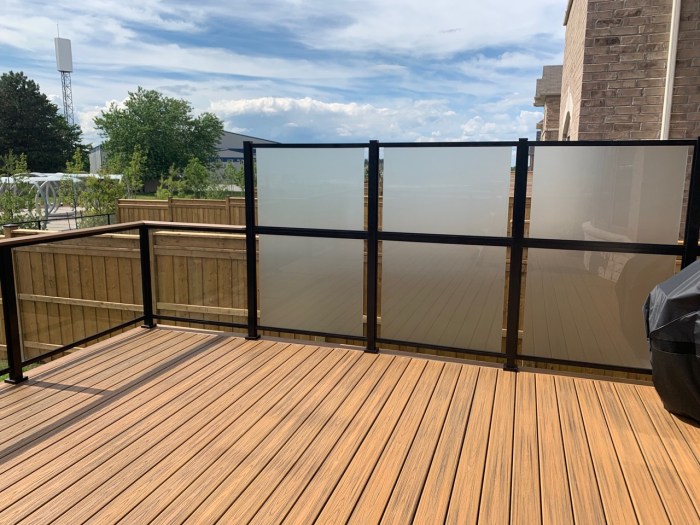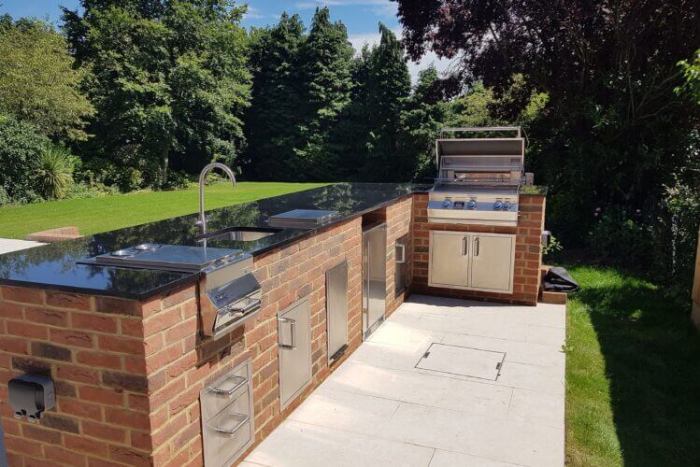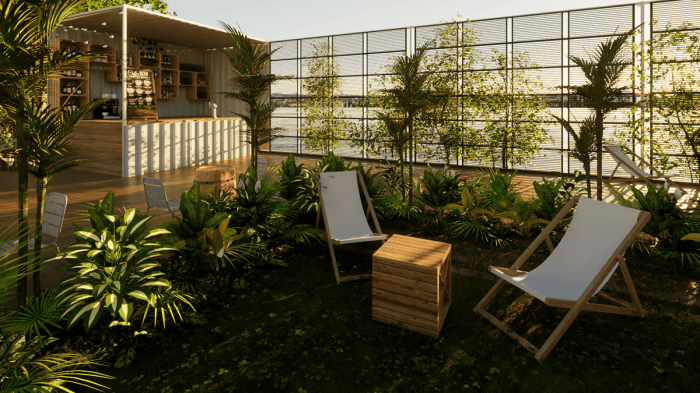Rooftop heating solutions for colder climates offer innovative ways to combat the chill of frigid temperatures, transforming rooftops into efficient thermal shields. As winter descends and temperatures plummet, the need for effective heating systems becomes paramount, driving homeowners and businesses alike to seek out reliable solutions. From versatile heating mats to advanced hydronic systems, these rooftop technologies not only enhance comfort but also promise energy efficiency and resilience against harsh weather.
Understanding the various types of rooftop heating solutions is crucial for making informed decisions. These systems, designed specifically for colder climates, provide warmth and safety while minimizing energy consumption. Moreover, the right materials and installation methods can play a vital role in maximizing the benefits of these heating solutions, ensuring they perform optimally even in the most severe conditions.
Overview of Rooftop Heating Solutions

Rooftop heating solutions are essential in colder climates, providing vital warmth and comfort for residential and commercial properties. These systems effectively prevent ice accumulation and ensure the safety and functionality of rooftops during winter months. Various heating methods are available, each with unique characteristics tailored to meet different requirements and preferences.Rooftop heating solutions can be categorized into several types, each designed to combat severe weather conditions.
These include electric heating systems, hydronic heating systems, and heated roof panels. Electric heating systems utilize electric cables or mats installed beneath the roofing material, providing direct heating through electric resistance. Hydronic systems, on the other hand, circulate heated water through pipes embedded in the roof structure. Heated roof panels often combine various technologies, offering efficient heat distribution.
Benefits of Using Rooftop Heating Systems
The advantages of rooftop heating systems in extreme weather conditions extend beyond mere comfort. They significantly enhance the longevity of roofing materials by preventing ice dam formation and reducing the risk of structural damage. The following points highlight the key benefits of these systems:
- Energy Efficiency: Modern rooftop heating solutions are designed to maximize energy use, minimizing operational costs while effectively managing heat distribution.
- Safety: By preventing ice build-up, these systems reduce the risk of accidents related to falling ice and snow, ensuring pedestrian safety around the building.
- Structural Integrity: Maintaining clear roofs helps protect the integrity of the roofing material and supports overall structural health, reducing maintenance costs over time.
- Convenience: Automated systems can be programmed to operate based on weather conditions, providing consistent heating without the need for manual intervention.
Common Materials Used in Rooftop Heating Systems, Rooftop heating solutions for colder climates
The construction of rooftop heating systems relies on various materials that ensure durability and efficiency. Each material serves a specific purpose, contributing to the overall effectiveness of the heating system. Some of the most common materials include:
- Electrical Cables: These cables are often made of copper or aluminum, chosen for their excellent conductivity, allowing for efficient heat generation.
- Piping: Hydronic systems typically utilize durable materials such as PEX (cross-linked polyethylene) or copper, both known for their resistance to corrosion and ability to withstand high temperatures.
- Insulation: High-quality insulation materials, like rigid foam or fiberglass, are crucial in reducing heat loss, ensuring that the warmth generated is effectively retained.
- Roof Membranes: Specialized roof membranes are designed to withstand extreme temperatures and moisture, protecting the heating system while providing additional insulation.
Properly designed and installed rooftop heating systems can significantly extend the lifespan of roofing materials and enhance safety during winter months.
Installation Methods and Procedures

Rooftop heating solutions are essential for ensuring comfort in colder climates. Understanding the installation methods and procedures is crucial for achieving optimal performance and longevity of the system. This section Artikels the step-by-step installation process, the tools and equipment necessary, and compares the merits of DIY installation versus professional services.
Step-by-Step Installation Process
Following a structured installation process ensures that the rooftop heating system functions efficiently. The installation can be broken down into the following steps:
1. Site Assessment
Evaluate the rooftop structure for load-bearing capacity and accessibility. Consider the orientation and local weather conditions.
2. System Selection
Choose the appropriate type of heating solution, such as electric or hydronic systems, based on the specific requirements and roof type.
3. Preparation of the Roof
Clean the installation area to remove debris and ensure a flat surface. Install insulation where required to maximize efficiency.
4. Mounting Hardware Installation
Secure any brackets or mounting systems that will hold the heating elements to the roof. Ensure they are properly aligned and anchored.
5. Electrical and Plumbing Setup
For electric systems, connect wiring according to local codes. For hydronic systems, lay out and connect the piping, ensuring proper slope for drainage.
6. Installation of Heating Elements
Place the heating cables or mats in the designated areas, following the manufacturer’s guidelines for spacing and overlap.
7. Connection to Control System
Integrate a thermostat or control panel to manage the heating system effectively. This step is crucial for ensuring user convenience.
8. Testing the System
Before completing the installation, test the entire system to confirm that it operates correctly and efficiently.
9. Final Inspection
Conduct a thorough check to ensure all components are securely installed and meet safety standards.
Tools and Equipment Required for Installation
To efficiently install rooftop heating solutions, certain tools and equipment are necessary. The following is a comprehensive list that will aid in the installation process:
Safety Gear
Hard hats, safety glasses, gloves, and harnesses to ensure worker safety.
Measuring Tools
Tape measure, level, and square for accurate installations.
Power Tools
Drill, saw, and impact driver for securing brackets and cutting materials.
Hand Tools
Wrenches, screwdrivers, and pliers for assembly and adjustments.
Electrical Equipment
Multimeter for checking electrical connections, wire strippers, and connectors.
Plumbing Tools
Pipe cutter, wrenches, and soldering tools for hydronic systems.
Insulation Materials
Foam boards or rolls for thermal insulation where necessary.
Heating Elements
The selected heating cables, mats, or hydronic tubing.
Obtain direct knowledge about the efficiency of Rooftop privacy solutions for residential areas through case studies.
DIY Installation versus Professional Installation
Deciding between DIY installation and hiring professionals is a key consideration for homeowners. Each option has its advantages and challenges:
DIY Installation
Cost-effective as it eliminates labor charges.
Provides personal satisfaction and a hands-on experience.
Requires a good understanding of electrical and plumbing work, which may not be feasible for everyone.
Risk of improper installation could lead to performance issues or safety hazards.
Professional Installation
Ensures compliance with local building codes and safety regulations.
Professionals bring experience and expertise that can enhance system efficiency and longevity.
Warranty on installation may cover any future issues related to workmanship.
Higher initial costs but could save money in the long run by preventing mistakes.
Choosing the right installation method is critical for the effectiveness and safety of rooftop heating solutions in colder climates.
Maintenance of Rooftop Heating Systems
Rooftop heating systems require diligent maintenance to ensure optimal performance, safety, and longevity. Regular checks not only prevent unexpected breakdowns but also enhance energy efficiency, saving costs in the long run. This section Artikels essential maintenance practices, identifies common issues, and emphasizes the significance of a proactive maintenance strategy.
Maintenance Checklist for Rooftop Heating Solutions
A comprehensive maintenance checklist is crucial for identifying potential issues and ensuring the system operates effectively. Regular inspections can help maintain system efficiency and reliability. Below is a detailed checklist that covers essential maintenance tasks:
- Inspect and replace air filters regularly to ensure adequate airflow and efficiency.
- Examine ductwork and insulation for leaks or damage.
- Check the thermostat settings and calibrate as necessary for accurate temperature control.
- Inspect heating cables and mats for any signs of damage or wear.
- Clean the exterior of the heating units to prevent debris accumulation.
- Verify that all electrical connections are secure and free from corrosion.
- Test the system’s safety controls and shut-off mechanisms.
- Flush the heating system annually to remove sediment buildup.
- Schedule professional inspections at least once a year for expert evaluation.
Common Issues and Troubleshooting for Rooftop Heating Systems
Rooftop heating systems may encounter various problems that can affect their performance. Recognizing these issues early and knowing how to troubleshoot them can prevent further complications. Here are some common issues and their potential solutions:
- Insufficient Heating: Often caused by dirty filters or blocked ducts. Regularly replacing filters and ensuring ducts are clear can help maintain proper airflow.
- Frequent Cycling: This may indicate a faulty thermostat or an oversized heating unit. Check thermostat calibration and consider consulting a professional for unit sizing confirmation.
- Strange Noises: Unusual sounds could stem from loose components or debris in the heating system. Inspect for loose parts and clear any obstructions.
- Increased Energy Bills: A sudden spike in utility costs can suggest inefficiencies. Regular maintenance, including cleaning and inspections, can mitigate this issue.
Importance of Regular Maintenance and Its Impact on System Efficiency
Regular maintenance of rooftop heating systems plays a vital role in ensuring energy efficiency and extending the lifespan of the equipment. Well-maintained systems operate more effectively, leading to lower energy consumption and reduced operational costs.
“An ounce of prevention is worth a pound of cure.”
This adage holds true for rooftop heating systems, where proactive maintenance can prevent costly repairs and system replacements. Establishing a routine maintenance schedule fosters reliability, enhances safety, and guarantees that systems perform at peak efficiency, providing comfort during the coldest months.
Cost Analysis and Energy Efficiency: Rooftop Heating Solutions For Colder Climates
The financial considerations of rooftop heating solutions are crucial for homeowners and businesses in colder climates. Understanding the costs associated with various heating systems, as well as their energy efficiency ratings, allows for informed decision-making. A thorough cost analysis not only aids in budgeting but also highlights potential long-term savings through improved energy efficiency.
Cost Breakdown of Rooftop Heating Solutions
When evaluating rooftop heating solutions, it’s essential to consider both initial installation costs and ongoing operational expenses. Here is a detailed breakdown of common rooftop heating systems:
-
Electric Heating Systems:
Typically range from $1,500 to $3,000 for installation, depending on the roof type and system complexity. Operational costs can vary significantly based on local electricity rates. -
Hydronic Heating Systems:
Installation costs generally range between $5,000 and $10,000 due to the complexity of setting up water lines and boilers. However, these systems often offer lower operational costs and can be more energy-efficient than electric systems. -
Gas Heating Systems:
Installation usually costs between $3,000 and $6,000. While they may have higher upfront costs, gas heating systems can provide substantial savings on utility bills, especially in areas with lower gas prices.
Energy Efficiency Ratings of Rooftop Heating Systems
Energy efficiency ratings are critical indicators of a system’s performance and operational cost. Various rooftop heating solutions have differing efficiency ratings, often measured using units like the Annual Fuel Utilization Efficiency (AFUE) for gas systems and the Energy Efficiency Ratio (EER) for electric systems.
-
Electric Heating Systems:
Typically have EER ratings ranging from 8 to 12. While they are easy to install, their efficiency can be lower in extreme weather temperatures. -
Hydronic Heating Systems:
Generally boast higher efficiency ratings, often exceeding 90% AFUE, making them an attractive option for long-term energy savings. -
Gas Heating Systems:
Usually feature AFUE ratings between 80% to 98%, with higher-rated systems providing better efficiency and lower fuel consumption.
Potential Savings from Improved Energy Efficiency
Investing in energy-efficient rooftop heating solutions can lead to significant cost savings over time, particularly in colder climates where heating demands are high.
“Energy-efficient systems can reduce heating costs by up to 30% compared to standard systems, translating to hundreds of dollars saved annually.”
For example, a homeowner who switches from an old electric heating system to a modern hydronic or gas system with an AFUE rating of 95% could see their annual heating bill drop from approximately $1,500 to around $1,050, resulting in a savings of $450 each year. Over a decade, this can amount to substantial financial relief, making energy-efficient systems not only environmentally friendly but also economically viable.Investing in rooftop heating solutions with higher energy efficiency ratings not only offers immediate savings but also contributes to long-term sustainability goals, making them a wise choice for those in colder climates.







